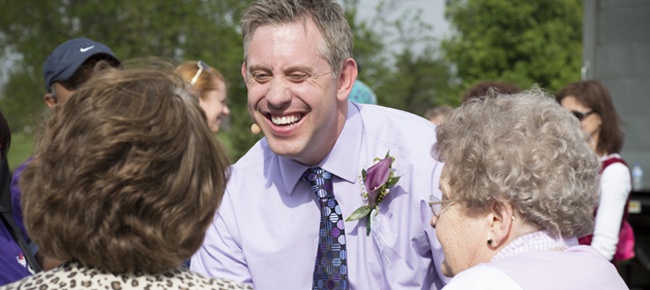
“Need More Creative Thinkers” in Aging Services.
Lifespark is featured on CNBC as one of 8 innovators in the elder-care market. Before the interview even began, the journalist Julie Halpert asked how Lifespark is different than other home care and senior providers. That is the perfect conversation starter for a bigger issue we all face in the U.S.
 There’s a revolution occurring right now in senior care. Change is not only needed, it’s being demanded by people in the second half of life who want a different experience. A Forbes article on the longevity economy shares how ‘there is very clearly a growing hunger for products and services tailored to satisfy the needs, interests and aspirations of the rapidly growing mature consumer market.’ It goes on to say that understanding this market and thinking differently will be an important part of the solution to America’s economic challenges and the challenges of many aging societies.
There’s a revolution occurring right now in senior care. Change is not only needed, it’s being demanded by people in the second half of life who want a different experience. A Forbes article on the longevity economy shares how ‘there is very clearly a growing hunger for products and services tailored to satisfy the needs, interests and aspirations of the rapidly growing mature consumer market.’ It goes on to say that understanding this market and thinking differently will be an important part of the solution to America’s economic challenges and the challenges of many aging societies.
The traditional model of senior care is broken. It is no longer relevant to the active minds and spirits of today’s seniors who want to live with purpose and passion. It also doesn’t produce the outcomes or cost savings demanded today. The landmark Medicare study published in the New England Journal of Medicine in 2009 and subsequent reports by the Dartmouth Atlas of Health Care show that current health and senior care models have done little to change those outcomes. For Minnesota, the impact has hit 27% of our hospitals with 36 being penalized for high readmission rates. Even the hospitals that are not penalized for readmission rates are going to face the ongoing need to improve outcomes and satisfaction scores while reducing costs (the triple aim).
Traditional senior care providers primarily focus on physical health challenges after they occur. But seniors experience other life challenges beyond health, such as losing family, friends, the ability to drive, or even their independence. Without a professional advocate to care for their whole person, seniors can lose their joy and independence, causing their health to decline.
What are the challenges for people in the second half of life? Finding proactive solutions that look at the whole person and seeking not only to improve outcomes, but the quality of life, long-term. This is true as you look at the innovations being created and who is successful. All 8 companies featured with Lifespark in the CNBC article as innovators, share one common denominator: better outcomes for people in the second half of life. Whether it was for care coordination, caregiving services or technology aimed at streamlining medical care, these innovators are all capitalizing on one growing need. The need for solutions that create better experiences and better outcomes for individuals because the current system is not producing the results that people want.
Dr. Bill Thomas, founder of the Eden Alternative and the Greenhouse Project, asks: “What if everything we think about aging is wrong? The future of aging and care is going to revolve around the precepts of person-centered approached to care. Lifespark’s model is a ground-breaking approach . . . And poised to spread across America and then far beyond our country’s shores.
The field of aging services needs risk-takers and creative thinkers and Joel [Theisen, CEO & founder of Lifespprk] is one of the best . . . It is time to celebrate the emerging future of aging in this country and to recognize Lifespark’s incredible role in making that future a reality.”
Innovation is also bigger than just new technology or programs, it’s about starting a new conversation and coming together as a system to create better outcomes for our aging population. We want to know, what do you think is needed to create better outcomes for people? What have you seen in the current system that should be fixed?



